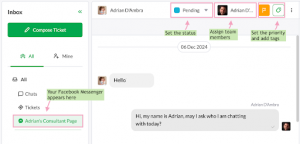Welcome to the third article in our 3-part series on all things content marketing for small business (you can check out parts 1 and 2 HERE and HERE). This time, we’re sharing five common mistakes to avoid in content marketing today.
Five common content marketing mistakes to avoid:

1. Not talking to the right audience
You need to make sure your content is talking directly to your ideal customers. Often, businesses produce great quality content, but that content doesn’t achieve the desired result because it isn’t laser-focused on the goals and challenges of the business’s ideal customers. Your message needs to resonate with the right people in order to drive engagement, action, and, ultimately, sales.
If you aren’t sure what your audience is looking for – ask! You can do your own research by sending out a short survey via email or taking note of questions that come up during sales meetings and customer service interactions.

2. Not creating evergreen content
This one is an easy trap to fall into if you’re not careful. Ensuring maximum “bang for your buck” from content involves writing articles that won’t easily date.
Don’t spend too much of your time posting blogs about specific news events (although “newsjacking” can help your post go viral if you do it well!), fashion trends, pop culture references, or mentioning specific dates because the information will become redundant very quickly. Search engines prioritize relevance. You want your content to remain fresh for months and years to come.
Evergreen content is always relevant — much like the way evergreen trees retain their leaves all year round. Interesting and relevant content that does not become dated gives you an advantage when it comes to being found online by search engines. Not only will it deliver new traffic to your website — it will help you hold onto a higher position in search engine rankings.

3. Not taking your audience through a funnel
Building out some sort of funnel is not as complicated as it sounds – we promise! All we mean here is that you need to include the next steps for people after they digest your content. An article or download is a wasted opportunity if you don’t include a link to something else – a meatier piece of content, a product page on your website, a call-to-action to book a free demo of your services, or whatever else you have to offer.
Remember, we want to take people from awareness through consideration and purchase. Each stage of the buyer’s journey requires a different type of content — from top-of-the-funnel trend-focused blog posts to detailed product guides to help buyers make purchasing decisions.

4. Not promoting your content
It’s no good creating content and then leaving it to sit unseen. It’s your job, as a knowledgeable and generous business owner, to deliver what people need! Unfortunately, this step is where many marketers fall flat. If you don’t already have lots of traffic to your website or blog, you’re going to need to get your content in front of as many new faces as possible.
Share your content on social media. Send it out to your email list. Reach out to industry publications to wangle some free PR. And (if you have the budget) play with paid advertising too. There are countless ways to distribute your know-how and maximize results. You’ve just got to use some good old initiative.

5. Not tracking and measuring results
We won’t labor this point too much because, well, it isn’t quite as much fun as the others!
Despite the numbers being the serious and sensible part of content marketing, these numbers are what keep you on track for success. It’s vital to think about what your core goals are and what an effective content strategy means to your business. Brand awareness? Lead generation? Sales?
Next, think about how you can best measure success. What metrics would be the most meaningful, considering the goals you’re working towards? Perhaps you’re looking for an increase in page views, better email click rates, more social shares, or stronger conversion rates. It’s up to you. Just make sure you know what you’re looking for — then track it.
Now, all of the above might seem like one big list of “what not to do.” But remember, we’ve also explored how you can turn those common mistakes into positive, productive actions that will move your content strategy forward. Result!
Read part one and part two of this series.
Need a helping hand — or two — to carry out your content marketing strategy?
Check out this list of 221 tasks you can assign to a Virtual Assitant.





